
Deutsch-Chinesische Enzyklopädie, 德汉百科
 Egypt
Egypt
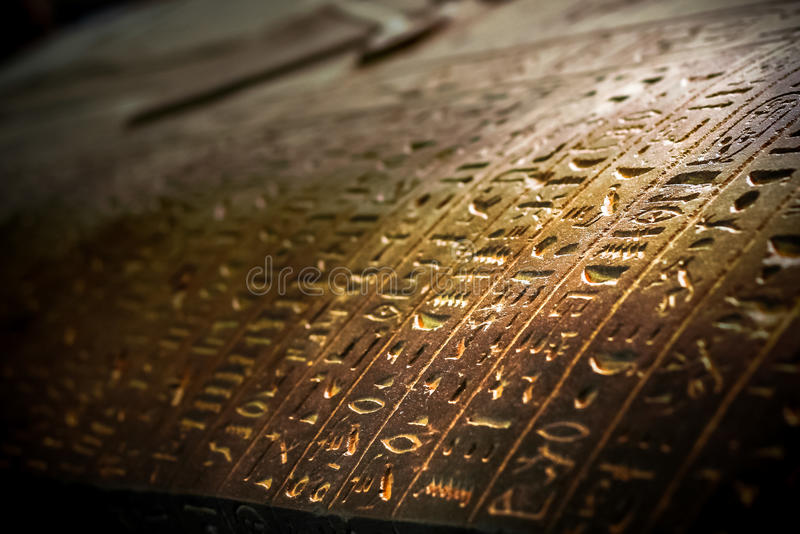


Der Luxor-Tempel (altägyptisch Ipet-reset) ist eine Tempelanlage im heutigen Luxor in Ägypten. Er wurde zur Zeit des Neuen Reichs errichtet und südlicher Harem des Amun von Karnak genannt. Er war dem Gott Amun, seiner Gemahlin Mut und ihrem gemeinsamen Sohn, dem Mondgott Chons, geweiht.
Der Tempel steht seit 1979 zusammen mit dem Karnak-Tempel und der thebanischen Nekropole auf der Weltkulturerbeliste der UNESCO.[1]
Aus wiederverwendetem Baumaterial wird geschlossen, dass hier bereits während der 12. Dynastie ein Heiligtum errichtet worden war. Unter Pharao Thutmosis III. wurde die Stationskapelle im ersten Hof gebaut.
An der vermeintlichen Stelle eines Heiligtums aus der 12. Dynastie ließ Amenophis III. durch seinen Baumeister Amenophis (Sohn des Hapu) den heutigen südlichen Teil des Tempels mit Sanktuar, Säulenhalle und dem zweiten Hof errichten. Auch der Säulengang wurde zu seiner Regierungszeit begonnen. Unter Amenophis IV. (Echnaton) wurde der Tempel geschlossen, der Name des Gottes Amun getilgt und der König errichtete in der Nähe ein Atonheiligtum. Tutanchamun baute am Säulensaal weiter, der durch Haremhab fertiggestellt wurde.
Ramses II. ließ den ersten Hof samt dem mächtigen Pylon sowie Statuen und Obelisken ausführen. Nektanebos I. gestaltete den Vorhof.
Alexander der Große ließ das Sanktuar umbauen. Statt der vier Säulen, die das Dach trugen, wurde eine Kapelle errichtet. In der Römerzeit wurde die Tempelanlage in eine Festung integriert. In den ersten nachchristlichen Jahrhunderten wurden vier Kirchen auf dem Gelände errichtet.
卢克索神庙(Luxor Temple)位于埃及卢克索的尼罗河东岸,即古埃及新王国时期的首都底比斯,大约建于公元前十四世纪。
通过神庙中重新被使用的建筑材料可以推导出在埃及第十二王朝时这里就已经有一座神庙了。法老图特摩斯三世在这里建造了新神庙的第一个部分。
阿蒙霍特普三世命令他的建筑师阿蒙霍特普在今天神庙的南部建造了圣殿、柱殿和第二个内院。柱廊也是他统治时期开始建造的。阿蒙霍特普四世时神庙被关闭,阿蒙的名字被涂抹,在神庙的边缘建造了一座阿頓的神庙。图坦卡蒙继续了神庙的建造,哈伦海布完成了柱殿。
拉美西斯二世建造了第一院、带有雕像的大门和方尖塔。内克塔内布一世建造了大门前的院。
亚历山大大帝下令改造圣殿,将支撑屋顶的四根柱子改为一座小堂。在罗马帝国时期整个神庙被结合到一座要塞中。公元后一开始的几个世纪里整个神庙内还建造了四座教堂。
ルクソール神殿(ルクソールしんでん、英語: Luxor Temple)は、エジプトのルクソール(古代のテーベ)東岸にある古代エジプト時代の神殿複合体である。もともとカルナック神殿の中心を形成するアメン大神殿の付属神殿として[2]、エジプト第18王朝(紀元前1550-1295年頃[3])ファラオのアメンホテプ3世(紀元前1390-1352年頃[3])によって中心部分が建立された[1]。
神殿の後方には、アメンホテプ3世およびアレクサンドロス3世(紀元前332-323年[3])によって構築された祠堂がある[4][5]。ローマ時代には、神殿およびその周辺は軍の要塞となり、その領域はローマ政府の基地であった[6]。
アメン大神殿とはスフィンクスの参道で結ばれていた。神殿入口となる第1塔門の前には1対のラムセス2世(紀元前1279-1213年頃[3])の坐像、その手前にはオベリスク(高さ25メートル[7])が1本立っている[4]。オベリスクは本来左右2本あったが、右側の1本(高さ22.55メートル[7])は1819年[4]、フランスに贈られてパリに運ばれ、現在コンコルド広場にある[8]。
Luxor Temple is a large Ancient Egyptian temple complex located on the east bank of the Nile River in the city today known as Luxor (ancient Thebes) and was constructed approximately 1400 BCE. In the Egyptian language it is known as ipet resyt, "the southern sanctuary". In Luxor there are several great temples on the east and west banks. Four of the major mortuary temples visited by early travelers and tourists include the Temple of Seti I at Gurnah, the Temple of Hatshepsut at Deir el Bahri, the Temple of Ramesses II (a.k.a. Ramesseum), and the Temple of Ramesses III at Medinet Habu; and the two primary cults temples on the east bank are known as the Karnak and Luxor.[1] Unlike the other temples in Thebes, Luxor temple is not dedicated to a cult god or a deified version of the king in death. Instead Luxor temple is dedicated to the rejuvenation of kingship; it may have been where many of the kings of Egypt were crowned in reality or conceptually (as in the case of Alexander the Great who claimed he was crowned at Luxor but may never have traveled south of Memphis, near modern Cairo.)
To the rear of the temple are chapels built by Amenhotep III of the 18th Dynasty, and Alexander. Other parts of the temple were built by Tutankhamun and Ramesses II. During the Roman era, the temple and its surroundings were a legionary fortress and the home of the Roman government in the area.
Le temple d'Amon à Louxor ou Opet du sud1 est un temple égyptien voué au culte d'Amon. Situé au cœur de l’ancienne Thèbes, il fut construit pour l’essentiel sous les XVIIIe et XIXe dynasties. Il était consacré au dieu dynastique Amon sous ses deux aspects d’Amon-Rê céleste et d'Amon-Min (divinité ithyphallique). Les parties les plus anciennes actuellement visibles remontent à Amenhotep III et à Ramsès II. Par la suite, de nouveaux éléments furent ajoutés par Chabaka, Nectanébo Ier et les Lagides. À l’époque romaine, le temple fut partiellement transformé en camp militaire. L’édifice, l’un des mieux préservés du Nouvel Empire, a gardé de nombreuses structures en élévation. Outre le grand pylône, le visiteur peut ainsi traverser deux grandes cours à péristyle et la colonnade monumentale qui relie ces deux cours. Le sanctuaire proprement dit, résidence de l'Amon d'Opet, de même que les salles qui précèdent ont conservé une bonne partie de leur couverture en dalles.
Il tempio di Luxor è un grande complesso templare egiziano situato sulla riva orientale del Nilo nella città di Luxor (antica Tebe).
Noto nella lingua egizia come ipet resyt, o "harem meridionale", il tempio era dedicato a Amon; durante il Nuovo Regno fu il centro della festa annuale di Opet, nella quale una statua di Amon era trasferita lungo il Nilo dal vicino Grande tempio di Amon noto anche come Tempio di Karnak Ipet-sut[1] per il rito di fertilità.
El templo de Lúxor, situado en el corazón de la antigua Tebas, fue construido esencialmente bajo las dinastías XVIII y XIX egipcias. Estaba consagrado al dios Amón bajo sus dos aspectos de Amón-Ra (Ra, era considerado el dios del cielo, dios del Sol y del origen de la vida en la mitología egipcia). Las partes más antiguas actualmente visibles remontan a Amenhotep III y a Ramsés II. Seguidamente, nuevos elementos fueron añadidos por Shabako, Nectanebo I y la dinastía ptolemaica. En época romana, el templo fue parcialmente transformado en campo militar. El edificio, uno de los mejores conservados del Nuevo Imperio egipcio, aún mantiene numerosas estructuras. Además del gran pilono, el visitante puede también atravesar dos grandes peristilos y la columnata monumental que enlaza estos dos patios. El santuario propiamente dicho, residencia del Amón de Opet, al igual que las salas que conservan una gran parte de sus baldosas.
Forma parte del conjunto denominado Antigua Tebas con sus necrópolis, declarado Patrimonio de la Humanidad por la Unesco en 1979.
Луксорский храм — развалины центрального храма Амона-Ра, на правом берегу Нила, в южной части Фив, в пределах современного города Луксор.
Храм богов Амона, Мут и Хонсу представляет собой наиболее полное воплощение архитектурных особенностей Нового царства (XVI—XI вв. до н. э.) Его отличают грандиозность замысла, монументальность и торжественность деталей, большое количество колонн.
Храм ориентирован с северо-запада на юго-восток. Для соответствия с пилонами стоявшего в получасовом расстоянии к северу Карнака, с которым он был соединён мощёной аллеей сфинксов, северный пилон его уклонен несколько к востоку от общей оси.
Древнейшая часть — святая святых, с примыкающими залами, украшенными монументальными рельефами и надписями — основана при Аменхотепе III; первые цари XIX династии прибавили к югу двор с 74 колоннами, перемежающимися статуями фараонов. Рамсес Великий пристроил северный перистиль и пилон и изобразил на внешней стороне последнего свои подвиги в войне с хеттами; здесь же начертан так называемый «эпос Пентаура».
У северного входа Луксорского храма — четыре колосса-монолита и два обелиска, из которых один перевезен в 1830-е гг. в Париж, на площадь Согласия. Длина сооружения от входа до самой северной стены — 260 метров.
 *Mediterranean Sea
*Mediterranean Sea
 Egypt
Egypt
 Albania
Albania
 Algeria
Algeria
 Amber Road
Amber Road
 Bosnia Herzegovina
Bosnia Herzegovina
 France
France
 Gibraltar
Gibraltar
 Greece
Greece
 Israel
Israel
 Italy
Italy
 Croatia
Croatia
 Libanon
Libanon
 Libya
Libya
 Malta
Malta
 Malta
Malta
 Monaco
Monaco
 Montenegro
Montenegro
 Palestine
Palestine

 Review
Review
 Slovenia
Slovenia
 Spain
Spain
 Syria
Syria
 Tunisia
Tunisia
 Turkey
Turkey
 Cyprus
Cyprus



Memphis (altägyptisch Men-nefer, Inbu-hedj, Hut-ka-Ptah; biblisch Noph, Movh; arabisch منف, DMG Manf) war die Hauptstadt des ersten Gaus von Unterägypten. Ihre Ruinen befinden sich in der Nähe der Ortschaften Mit-Rahineh und Helwan etwa 18 km südlich von Kairo und gehören seit 1979 als Teil der Stätte Memphis und seine Nekropole – die Pyramidenfelder von Gizeh bis Dahschur zum UNESCO-Welterbe.
Manetho berichtet, dass Memphis der Legende nach von König Menes 3000 v. Chr. gegründet wurde. Während des Alten Reiches war sie Hauptstadt von Ägypten und blieb eine wichtige Stadt in der ägyptischen Geschichte. Memphis stand unter dem Schutz des Gottes Ptah, des Schutzpatrons der Handwerker, dessen Tempel Hut-Ka-Ptah sich im Zentrum der Stadt befand.[1]
Die Stadt nahm eine strategische Position am Beginn des Nildeltas ein und beherbergte deshalb viele Werk- und Produktionsstätten, darunter auch für Waffen. Der Aufstieg und das Scheitern von Memphis sind eng mit der Geschichte des gesamten Landes verbunden. Aufgrund des Aufstiegs Alexandrias verlor Memphis ihre wirtschaftliche Rolle im Land und wurde nach und nach aufgegeben. Mit dem Edikt von Thessaloniki endete auch ihre religiöse Bedeutung.
孟菲斯(阿拉伯语:ممفس;埃及阿拉伯语:ممفيس;希腊语:Μέμφις)曾是诺姆─阿纳赫奇的都城,也是下埃及的第一个诺姆。它的遗迹在拉希纳村附近,位于开罗南方20公里处。
根据曼涅托的叙述,这座城市是由法老美尼斯于公元前3100年左右建立的。它是埃及古王国的首都,并直到古地中海时期都是一座重要的城市。[2][3][4]它在尼罗河三角洲的河口占据了一个重要的战略位置,并是一系列重要活动的故乡。城市里有许多的工坊,工厂,以及仓库,人们在此将商品和食物运往整个王国。在巅峰时期,孟菲斯是商业,贸易和宗教中心。
一般认为孟非斯的保护神是卜塔,他同时也是工匠们的保护神。他的神庙Hut-ka-Ptah(意为“卜塔灵魂的所在”)是城市中最为杰出的建筑物之一。曼涅托将这座神庙的名称翻译成希腊文Aί γυ πτoς(Ai-gy-ptos),这个词被认为是现代埃及在英文中的名字(Egypt)的词源。
孟菲斯的历史和古埃及历史息息相关。它最终的衰落被认为是后来建造的亚历山大港在经济上超过它的重要性的结果。而它在宗教上的重要性也在《萨洛尼卡敕令》发布之后,人们逐渐抛弃古代宗教而逐渐消散。
现在这座古代都城的遗址能让人们一窥它曾经的荣耀。自1979年以来,它就和吉萨的金字塔一同被认定为世界遗产。目前它作为生态博物馆开放给人们参观。
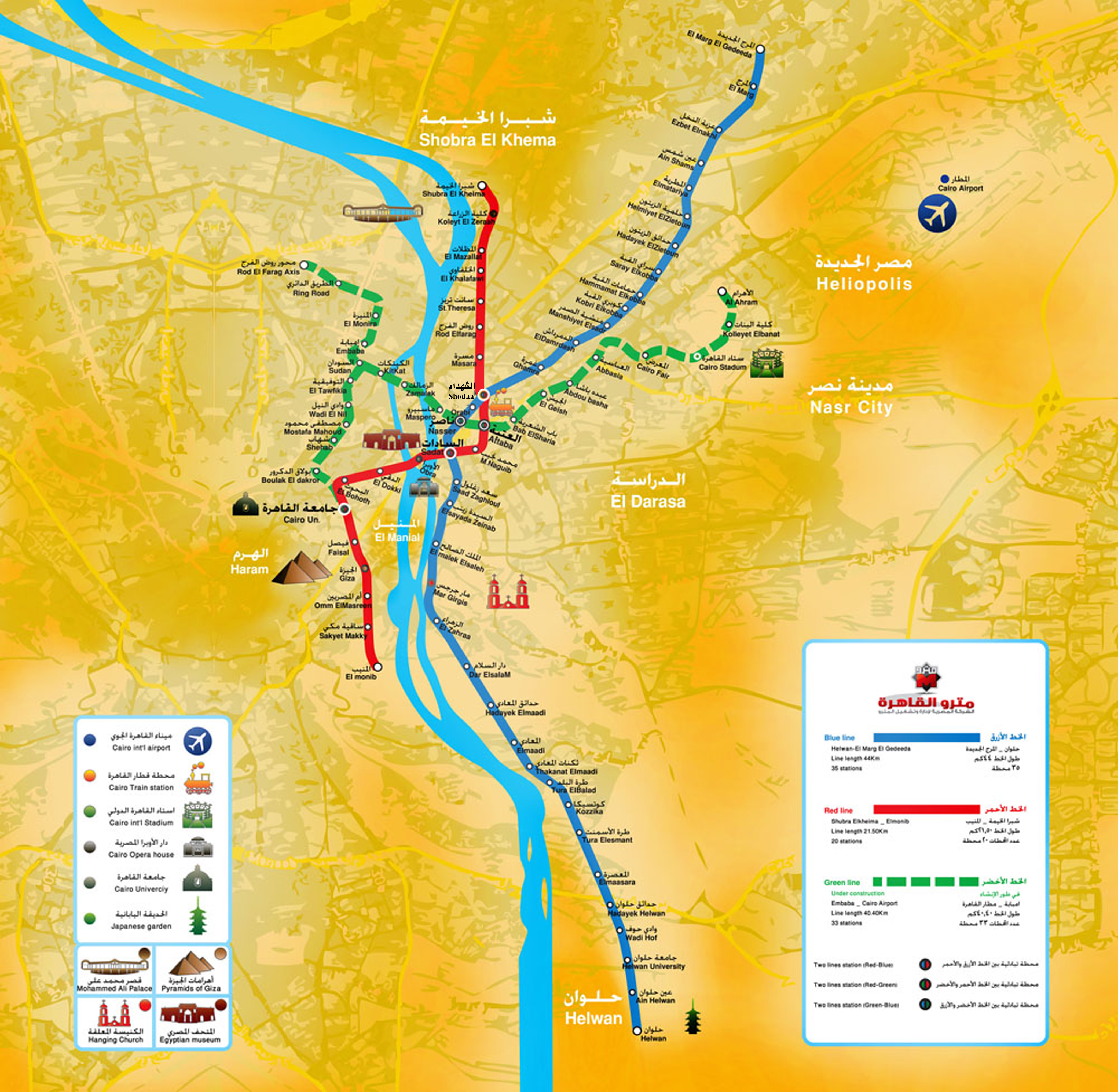

 *Mediterranean Sea
*Mediterranean Sea
 Egypt
Egypt
 Albania
Albania
 Algeria
Algeria
 Amber Road
Amber Road
 Bosnia Herzegovina
Bosnia Herzegovina
 France
France
 Gibraltar
Gibraltar
 Greece
Greece
 Israel
Israel
 Italy
Italy
 Croatia
Croatia
 Libanon
Libanon
 Libya
Libya
 Malta
Malta
 Morocco
Morocco
 Monaco
Monaco
 Montenegro
Montenegro
 Palestine
Palestine
 Slovenia
Slovenia
 Spain
Spain
 Syria
Syria
 Tunisia
Tunisia
 Turkey
Turkey
 Cyprus
Cyprus
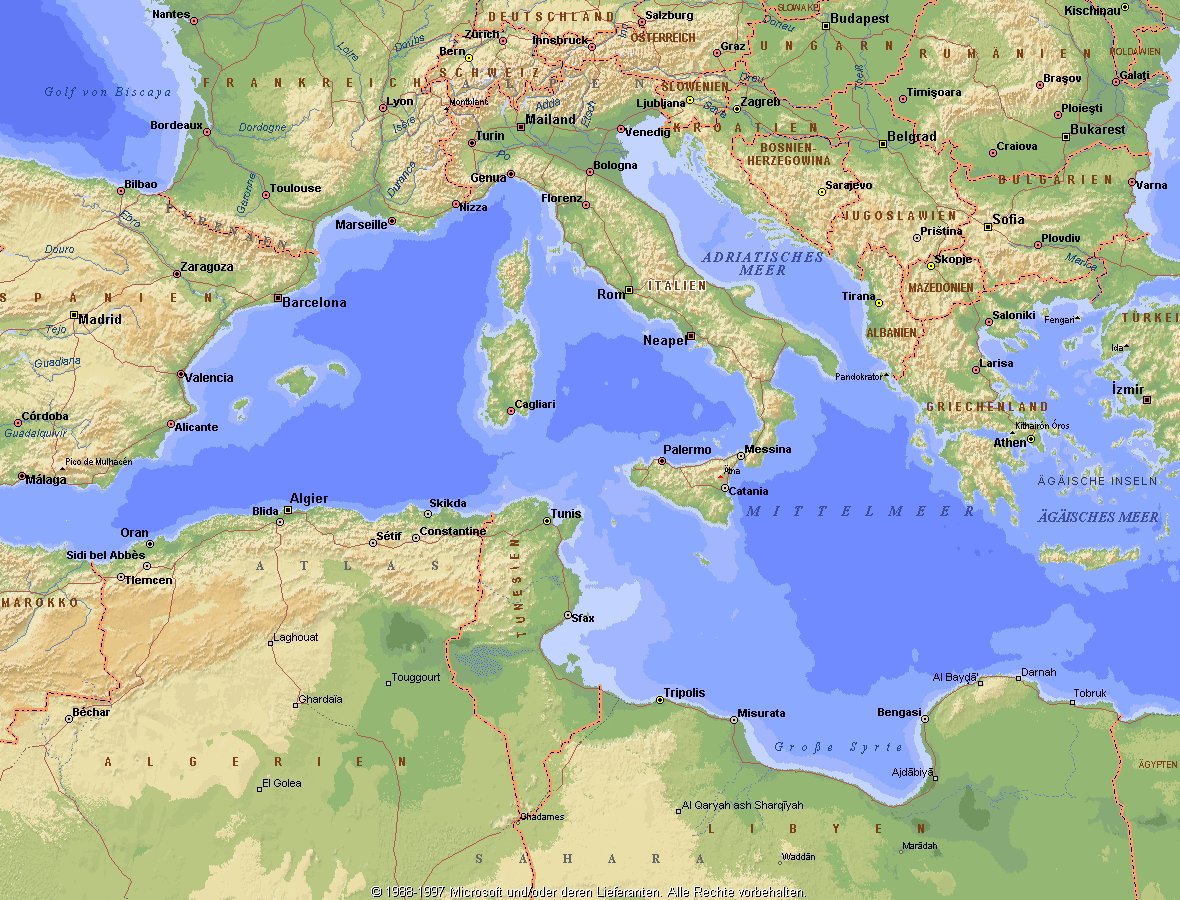
地中海,由北面的欧洲大陆,南面的非洲大陆以及东面的亚洲大陆包围着。东西长约4000千米,南北最宽处大约为1800千米,面积251.6万平方千米,是世界最大的陆间海。地中海的平均深度是1500米,最深处为5267米。
地中海西部通过直布罗陀海峡与大西洋相接,东部通过土耳其海峡(达达尼尔海峡和博斯普鲁斯海峡、马尔马拉海)和黑海相连。19世纪时开通了的苏伊士运河,接通了地中海与红海。 地中海是世界上最古老的海之一,[3] 而其附属的大西洋却是年轻的海洋。地中海处在欧亚板块和非洲板块交界处,是世界最强地震带之一。地中海地区有维苏威火山、埃特纳火山。
地中海作为陆间海,风浪较小,加之沿岸海岸线曲折、岛屿众多,拥有许多天然良好的港口,成为沟通三个大陆的交通要道。这样的条件,使地中海从古代开始海上贸易就很繁盛,促进了古代古埃及文明、古希腊文明、罗马帝国等的发展。现在也是世界海上交通的重要地区之一。其沿岸的腓尼基人、克里特人、希腊人,以及后来的葡萄牙人和西班牙人都是航海业发达的民族。著名的航海家如哥伦布、达·伽马、麦哲伦等,都出自地中海沿岸的国家。
地中海的沿岸夏季炎热干燥,冬季温暖湿润,被称作地中海性气候。植被,叶质坚硬,叶面有蜡质,根系深,有适应夏季干热气候的耐旱特征,属亚热带常绿硬叶林。这里光热充足,是欧洲主要的亚热带水果产区,盛产柑橘、无花果,和葡萄等,还有木本油料作物油橄榄。
Das Mittelmeer (lateinisch Mare Mediterraneum,[1] deshalb deutsch auch Mittelländisches Meer, präzisierend Europäisches Mittelmeer, im Römischen Reich Mare Nostrum) ist ein Mittelmeer zwischen Europa, Afrika und Asien, ein Nebenmeer des Atlantischen Ozeans und, da es mit der Straße von Gibraltar nur eine sehr schmale Verbindung zum Atlantik besitzt, auch ein Binnenmeer. Im Arabischen und Türkischen wird es auch als „Weißes Meer“ (البحر الأبيض/al-baḥr al-abyaḍ bzw. türk. Akdeniz) bezeichnet.
Zusammen mit den darin liegenden Inseln und den küstennahen Regionen Südeuropas, Vorderasiens und Nordafrikas bildet das Mittelmeer den Mittelmeerraum, der ein eigenes Klima (mediterranes Klima) hat und von einer eigenen Flora und Fauna geprägt ist.
地中海(ちちゅうかい、ラテン語: Mare Mediterraneum)は、北と東をユーラシア大陸、南をアフリカ大陸(両者で世界島)に囲まれた地中海盆地に位置する海である。面積は約3000平方キロメートル、平均水深は約1500メートル[2]。海洋学上の地中海の一つ。
地中海には、独立した呼称を持ついくつかの海域が含まれる(エーゲ海、アドリア海など)。地中海と接続する他の海としては、ジブラルタル海峡の西側に大西洋が、ダーダネルス海峡を経た北東にマルマラ海と黒海があり、南西はスエズ運河で紅海と結ばれている(「海域」「地理」で詳述)。
北岸の南ヨーロッパ、東岸の中近東、南岸の北アフリカは古代から往来が盛んで、「地中海世界」と総称されることもある[3]。
The Mediterranean Sea is a sea connected to the Atlantic Ocean, surrounded by the Mediterranean Basin and almost completely enclosed by land: on the north by Southern Europe and Anatolia, on the south by North Africa and on the east by the Levant. Although the sea is sometimes considered a part of the Atlantic Ocean, it is usually identified as a separate body of water. Geological evidence indicates that around 5.9 million years ago, the Mediterranean was cut off from the Atlantic and was partly or completely desiccated over a period of some 600,000 years, the Messinian salinity crisis, before being refilled by the Zanclean flood about 5.3 million years ago.
It covers an approximate area of 2.5 million km2 (965,000 sq mi), but its connection to the Atlantic (the Strait of Gibraltar) is only 14 km (8.7 mi) wide. The Strait of Gibraltar is a narrow strait that connects the Atlantic Ocean to the Mediterranean Sea and separates Gibraltar and Spain in Europe from Morocco in Africa. In oceanography, it is sometimes called the Eurafrican Mediterranean Sea or the European Mediterranean Sea to distinguish it from mediterranean seas elsewhere.[2][3]
The Mediterranean Sea has an average depth of 1,500 m (4,900 ft) and the deepest recorded point is 5,267 m (17,280 ft) in the Calypso Deep in the Ionian Sea. The sea is bordered on the north by Europe, the east by Asia, and in the south by Africa. It is located between latitudes 30° and 46° N and longitudes 6° W and 36° E. Its west-east length, from the Strait of Gibraltar to the Gulf of Iskenderun, on the southwestern coast of Turkey, is approximately 4,000 km (2,500 miles). The sea's average north-south length, from Croatia’s southern shore to Libya, is approximately 800 km (500 miles). The Mediterranean Sea, including the Sea of Marmara (connected by the Dardanelles to the Aegean Sea), has a surface area of approximately 2,510,000 square km (970,000 square miles).[4]
The sea was an important route for merchants and travellers of ancient times that allowed for trade and cultural exchange between emergent peoples of the region. The history of the Mediterranean region is crucial to understanding the origins and development of many modern societies.
The countries surrounding the Mediterranean in clockwise order are Spain, France, Monaco, Italy, Slovenia, Croatia, Bosnia and Herzegovina, Montenegro, Albania, Greece, Turkey, Syria, Lebanon, Israel, Egypt, Libya, Tunisia, Algeria, and Morocco; Malta and Cyprus are island countries in the sea. In addition, the Gaza Strip and the British Overseas Territories of Gibraltar and Akrotiri and Dhekelia have coastlines on the sea.
La mer Méditerranée (prononcé [me.di.tɛ.ʁa.ne]) est une mer intercontinentale presque entièrement fermée, bordée par les côtes d'Europe du sud, d’Afrique du Nord et d’Asie, depuis le détroit de Gibraltar à l'ouest aux entrées des Dardanelles et du canal de Suez à l'est. Elle s’étend sur une superficie d’environ 2,5 millions de kilomètres carrés. Son ouverture vers l’océan Atlantique par le détroit de Gibraltar est large de 14 kilomètres.
Elle doit son nom au fait qu’elle est littéralement une « mer au milieu des terres », en latin « mare medi terra »1.
Durant l’Antiquité, la Méditerranée était une importante voie de transports maritimes permettant l’échange commercial et culturel entre les peuples de la région — les cultures mésopotamiennes, égyptienne, perse, phénicienne, carthaginoise, berbère, grecque, arabe (conquête musulmane), ottomane, byzantine et romaine. L’histoire de la Méditerranée est importante dans l’origine et le développement de la civilisation occidentale.
Il mar Mediterraneo, detto brevemente Mediterraneo, è un mare intercontinentale situato tra Europa, Nordafrica e Asia occidentale connesso all'Oceano Atlantico. La sua superficie approssimativa è di 2,51 milioni di km² e ha uno sviluppo massimo lungo i paralleli di circa 3 700 km. La lunghezza totale delle sue coste è di 46 000 km, la profondità media si aggira sui 1 500 m, mentre quella massima è di 5 270 m presso le coste del Peloponneso. La salinità media si aggira dal 36,2 al 39 ‰.[2] La popolazione presente negli stati bagnati dalle sue acque ammonta a circa 450 milioni di persone.[2].
El mar Mediterráneo es uno de los mares del Atlántico. Está rodeado por la región mediterránea, comprendida entre Europa meridional, Asia Occidental y África septentrional. Fue testigo de la evolución de varias civilizaciones como los egipcios, los fenicios, hebreos, griegos, cartagineses, romanos, etc. Con aproximadamente 2,5 millones de km² y 3.860 km de longitud, es el segundo mar interior más grande del mundo, después del Caribe.1 Sus aguas, que bañan las tres penínsulas del sur de Europa (Ibérica, Itálica, Balcánica) y una de Asia (Anatolia), comunican con el océano Atlántico a través del estrecho de Gibraltar, con el mar Negro por los estrechos del Bósforo y de los Dardanelos y con el mar Rojo por el canal de Suez.2 Es el mar con las tasas más elevadas de hidrocarburos y contaminación del mundo.3
Средизе́мное мо́ре — межматериковое море, по происхождению представляющее собой глубоководную псевдоабиссальную внутришельфовую депрессию[1][2], связанную на западе с Атлантическим океаном Гибралтарским проливом[3].
В Средиземном море выделяют, как его составные части, моря: Адриатическое, Альборан, Балеарское, Ионическое, Кипрское, Критское, Левантийское, Ливийское, Лигурийское, Тирренское и Эгейское. В бассейн Средиземного моря также входят Мраморное, Чёрное и Азовское моря.


Die Muhammad-Ali-Moschee (arabisch مسجد محمد علي Masdschid Muhammad ʿAlī ‚Moschee des Mohammed Ali‘), manchmal auch als Alabastermoschee bezeichnet, ist eine der großen Moscheen in Kairo. Sie wurde im Auftrag von Pascha Muhammad Ali in den Jahren 1824 bis 1884 im osmanischen Stil mit barocken Elementen erbaut. Verantwortlich für den Bau zeichnete der Grieche Boşnak Yusuf aus Istanbul, der sich stilistisch an der dortigen Neuen Moschee (türk. Yeni Cami) orientierte.
穆罕默德·阿里清真寺(阿拉伯语:مسجد محمد علي Masjid Muhammad ʿAlī 'Mosque of Mohammed Ali'),有时也被称为阿拉巴斯清真寺,是开罗最大的清真寺之一。该清真寺由帕夏-穆罕默德-阿里委托建造,建于 1824 年至 1884 年之间,采用了带有巴洛克元素的奥斯曼风格。来自伊斯坦布尔的希腊人博什纳克-尤素福负责建造,他的风格是以当地的新清真寺(土耳其语:Yeni Cami)为蓝本。
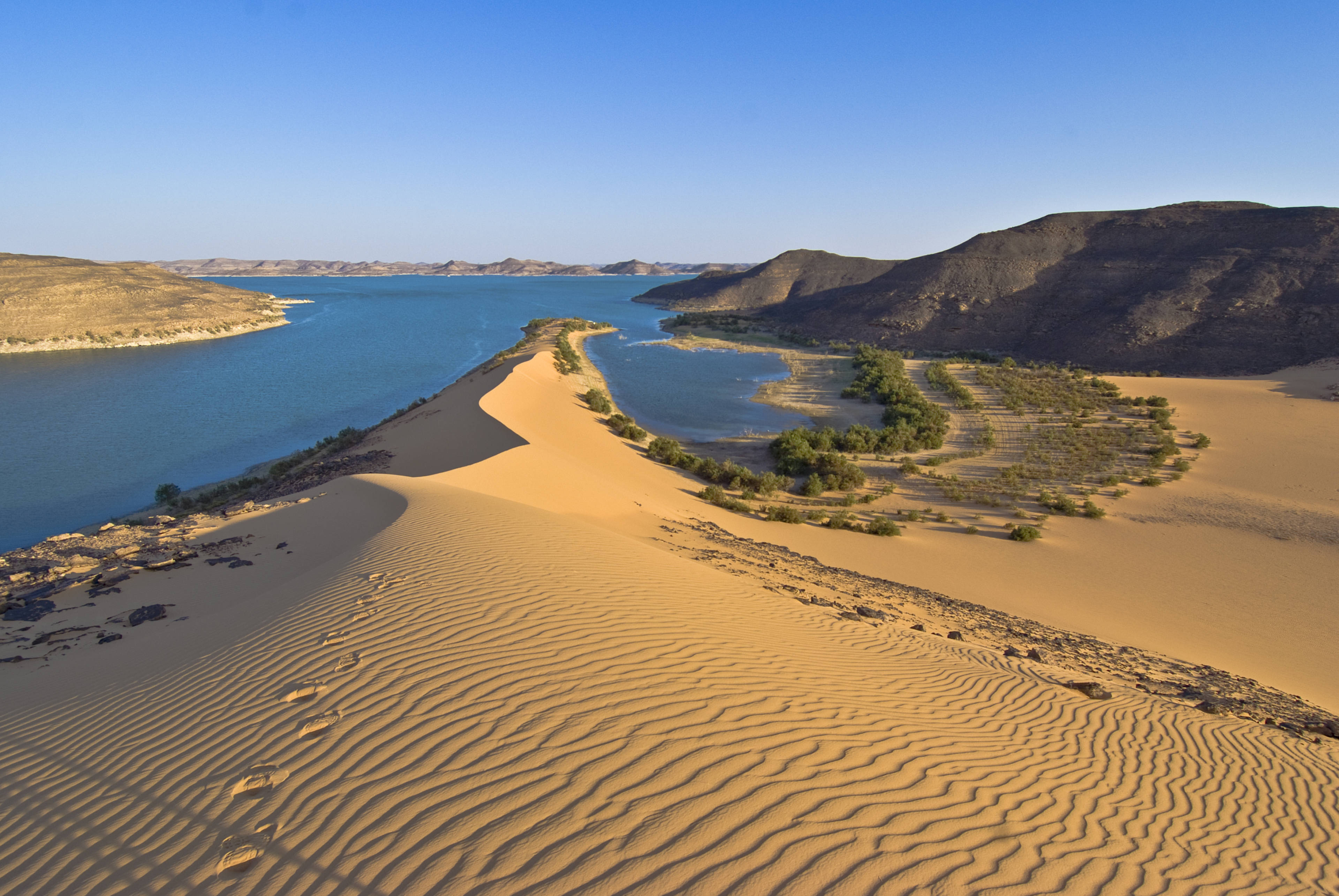
 *Mediterranean Sea
*Mediterranean Sea
 Egypt
Egypt

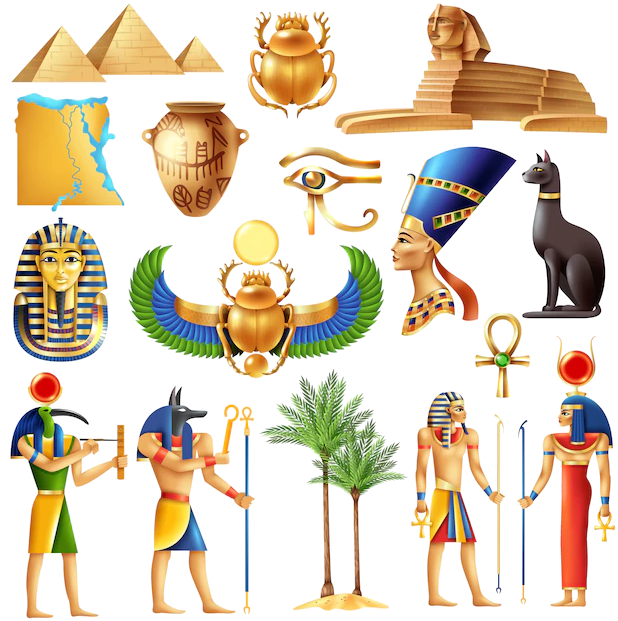 Ancient Egypt
Ancient Egypt
 Ethiopia
Ethiopia
 Burundi
Burundi
 Demokratische Republik Kongo
Demokratische Republik Kongo
 Kenya
Kenya
 Republic of the Sudan
Republic of the Sudan
 Republik Südsudan
Republik Südsudan
 Ruanda
Ruanda
 Tansania
Tansania
 Uganda
Uganda

尼罗河(英语:Nile,阿拉伯语:النيل,埃及语:Ḥ'pī / iteru,科普特语:ⲫⲓⲁⲣⲟ / phiaro)是一条流经非洲东部与北部的河流,与中非地区的刚果河以及西非地区的尼日尔河并列非洲最大的四个河流系统。尼罗河长6650千米,是世界上第一长的河流[2]。2007年虽有来自巴西的学者宣称亚马逊河长度更胜一筹,但尚未获全球地理学界的普遍认同[3]。尼罗河有两条主要的支流,白尼罗河和蓝尼罗河。发源于埃塞俄比亚高原的青尼罗河是尼罗河下游大多数水和营养来源,但白尼罗河则是两条支流中最长的。它源于非洲中部的大湖地区,其最远的源头位于卢旺达( 2°16′55.92″S 29°19′52.32″E / 2.2822000°S 29.3312000°E),向北它流经坦桑尼亚并注入维多利亚湖,再从此湖中溢出注入艾伯特湖,往北流入乌干达和苏丹共和国南部,并于后者处形成大面积沼泽湿地。蓝尼罗河源于埃塞俄比亚的塔纳湖(
2°16′55.92″S 29°19′52.32″E / 2.2822000°S 29.3312000°E),向北它流经坦桑尼亚并注入维多利亚湖,再从此湖中溢出注入艾伯特湖,往北流入乌干达和苏丹共和国南部,并于后者处形成大面积沼泽湿地。蓝尼罗河源于埃塞俄比亚的塔纳湖( 12°2′8.8″N 37°15′53.11″E / 12.035778°N 37.2647528°E),从东南流入苏丹。在苏丹首都喀土穆附近,白尼罗河蓝尼罗河相汇,形成尼罗河。
12°2′8.8″N 37°15′53.11″E / 12.035778°N 37.2647528°E),从东南流入苏丹。在苏丹首都喀土穆附近,白尼罗河蓝尼罗河相汇,形成尼罗河。
尼罗河从苏丹首都向北穿过苏丹和埃及,所经过的地方均是沙漠。从古代开始埃及的文明就依靠尼罗河而形成和兴旺。除海港和海岸附近的城市外埃及所有的城市和大多数居民住在阿斯旺以北的尼罗河畔,几乎所有的古埃及遗址均位于尼罗河畔。 在其入海口尼罗河形成一个巨大的三角洲,在这里它注入地中海。
一般にはヴィクトリア湖を源流だとする約5,760kmの大河だと思われているが、ヴィクトリア湖には多数の流入河川が存在し、一方でヴィクトリア湖からの流出河川はナイル川しか存在しないため、ヴィクトリア湖をナイル川水系に含み、そこに流れ込む河川の長さもナイル川の長さに加算するのが普通である。ヴィクトリア湖に流れ込む河川のうちで最大最長のものは、ルワンダに源を持ち、ルワンダとブルンジやタンザニアの国境をなし、さらにタンザニアとウガンダの国境をなした後タンザニアのブコバ市北方でヴィクトリア湖に流れ込むカゲラ川である。そのカゲラ川の支流のうちでもっとも長いものは、ブルンジ南部のブルリ県を水源とするルヴィロンザ川(Ruvyironza)であり、これがナイル川の最上流であるとされる。
ヴィクトリア湖(標高1134m)は赤道直下のサバナ気候であり、降水量も多い。ヴィクトリア湖から下流はヴィクトリアナイルとも呼ばれその長さは約5,760kmである。ヴィクトリア湖からのナイル川の流出口は湖北部のジンジャであり、流出口には記念碑が建てられているほか、オーエン・フォールズ・ダムが建設され、発電をおこなっている。ヴィクトリア湖から約500km下流に行くとキオガ湖を経て、120mの高さのあるマーチソン・フォールズをとおり、アルバート湖(標高619m)に着く[1]。アルバート湖には、ほかにもウガンダ南西部のジョージ湖からカジンガ水路、エドワード湖を通って流れてきたセムリキ川が注いでいる。アルバート湖からはアルバートナイルとも呼ばれる。南スーダンに入り、急流を一つ越えると首都ジュバである。ジュバからは勾配が非常に緩やかとなり、少し北のモンガラ市周辺からはスッドの影響を受けるようになる。支流のバハル・エル=ガザル川(Bahr el Ghazal)とノ湖で合流し、そこからは白ナイル川とよばれる。このあたりはスッドと呼ばれる大湿原となっており、ここで蒸発して流量が激減する。帆船時代はここは複雑な流路と生い茂る水草によって南北の交通を阻む障壁となってきたが、蒸気船の登場以後は航路が設定されるようになった。さらに、スッドの出口であるマラカル市の南でソバト川を合わせる。マラカルからハルツームまでの800kmの標高差は12mにすぎず、非常に緩やかな流れとなる[2]。
白ナイル川はスーダンのハルツームで、エチオピアのタナ湖から流れてくる青ナイル川と合流する。ハルツームを過ぎて80kmほどで、ナイル川には再び急流が出現する。これは北から数えて6番目の急流のため、第6急流と呼ばれる。ここからエジプトのアスワンまでの間にある6つの急流は、エジプトとスーダンの間の舟運を拒み、交通の障害となってきた。しかし、この急流の区間は古くからエジプトの影響を受け、ヌビアと呼ばれて独自の古代王国を築いていた。第6急流の北、200kmほどのところには古代のクシュ王国の都であったメロエ(Meroë)がある。さらにその北、ハルツームから約300km下流のアトバラで支流のアトバラ川と合流する。これ以北は完全な砂漠気候であり、ナイル河谷を除いてほとんど人は住まなくなる。また、これ以北ではナイルに注ぎ込む常時水流のある支流は存在せず、わずかに降水時に水の流れるワジが点在するのみとなる。第4急流付近には、メロエ以前にクシュの首都であったナパタ(ゲベル・バルカル)がある。この付近に2009年メロウェダム(Merowe Dam)が完成し、大規模な発電を開始した。エジプトに入ると、アスワン・ハイ・ダムとそれによって出来たナセル湖がある。ナセル湖の長さは550kmに及び、その南端はスーダン最北の町ワジハルファを越えさらに南まで延びている。アスワン以北は古くからの「エジプト」であり、幅5kmほどのナイル河谷に人が集住するようになる。アスワンからカイロまでは上エジプトと呼ばれる。この区間ではナイル川はほぼ一本の河川であるが、北西へと流れる支流があり、カイロ南西にファイユーム・オアシスを作ってカルーン湖に注ぎ込む。それからさらに北へ流れ、カイロから北は三角州が発達している。ナイル川三角州は下エジプトとも呼ばれる。三角州はアレクサンドリアからポートサイドまで約240kmの幅を持ち、東のロゼッタ支流と西のダミエッタ支流という二つの主流と多くの分流に別れ、地中海に注いでいる。
The Nile (Arabic: النيل, romanized: an-Nīl, Arabic pronunciation: [an'niːl], Bohairic Coptic: ⲫⲓⲁⲣⲟ Pronounced [pʰjaˈro][4], Nobiin: Áman Dawū[5]) is a major north-flowing river in northeastern Africa, and is the longest river in Africa and the disputed longest river in the world,[6][7] as the Brazilian government says that the Amazon River is longer than the Nile.[8][9] The Nile is about 6,650 km (4,130 mi)[n 1] long and its drainage basin covers eleven countries: Tanzania, Uganda, Rwanda, Burundi, the Democratic Republic of the Congo, Kenya, Ethiopia, Eritrea, South Sudan, Republic of the Sudan, and Egypt.[11] In particular, the Nile is the primary water source of Egypt and Sudan.[12]
The Nile has two major tributaries – the White Nile and the Blue Nile. The White Nile is considered to be the headwaters and primary stream of the Nile itself. The Blue Nile, however, is the source of most of the water, containing 80% of the water and silt. The White Nile is longer and rises in the Great Lakes region of central Africa, with the most distant source still undetermined but located in either Rwanda or Burundi. It flows north through Tanzania, Lake Victoria, Uganda and South Sudan. The Blue Nile begins at Lake Tana in Ethiopia[13] and flows into Sudan from the southeast. The two rivers meet just north of the Sudanese capital of Khartoum.[14]
The northern section of the river flows north almost entirely through the Sudanese desert to Egypt, then ends in a large delta and flows into the Mediterranean Sea. Egyptian civilization and Sudanese kingdoms have depended on the river since ancient times. Most of the population and cities of Egypt lie along those parts of the Nile valley north of Aswan, and nearly all the cultural and historical sites of Ancient Egypt are found along river banks.
Le Nil (prononcé [nil]) est un fleuve d'Afrique. Avec une longueur d'environ 6 700 km, c'est avec le fleuve Amazone, le plus long fleuve du mondenotes 1. Il est issu de la rencontre du Nil Blanc et du Nil Bleu. Le Nil blanc (Nahr-el-Abiad) prend sa source au lac Victoria (Ouganda, Kenya, Tanzanie) ; le Nil bleu (Nahr-el-Azrak) est issu du lac Tana (Éthiopie). Ses deux branches s'unissant à Khartoum, capitale du Soudan actuel, le Nil se jette dans la Méditerranée en formant un delta au nord de l'Égypte. En comptant ses deux branches, le Nil traverse le Rwanda, le Burundi, la Tanzanie, l'Ouganda, l'Éthiopie, le Soudan du Sud, le Soudan et l'Égypte. Il longe également le Kenya et la République démocratique du Congo (respectivement avec les lacs Victoria et Albert), et son bassin versant concerne aussi l'Érythrée grâce à son affluent du Tekezé.
Le Nil est la voie qu'empruntaient les Égyptiens pour se déplacer. Il apporte la vie en fertilisant la terre et garantit l'abondance. Il joua un rôle très important dans l'Égypte antique, du point de vue économique, social (c'était autour de lui que se trouvaient les plus grandes villes), agricole (grâce au précieux limon des crues) et religieux. Fleuve nourricier de cette civilisation, il fut divinisé sous le nom d'Hâpynotes 2, personnifiant la crue du Nil dans la mythologie égyptienne.
La crue du Nil, qui avait lieu chaque été et qui apportait le limon noir permettant la culture de ses rives, est restée longtemps un phénomène inexpliqué. C'est de ce limon noir que vient le nom antique de l'Égypte, Kemet, qui veut dire « la terre noire ».
De nos jours, les eaux limoneuses du Nil sont captées et redistribuées sur les terres agricoles grâce aux barrages de Ziftah, d'Assiout, d'Hammadi, d'Esna et surtout aux deux barrages géants d'Assouan, l'ancien et le grand barrage, dont la construction dans les années 1970 a nécessité le déplacement de plusieurs temples dont ceux d'Abou Simbel, qui auraient été noyés dans la retenue du lac Nasser.
Il Nilo (in arabo: نهر النيل, Nahr al-Nīl) è un fiume africano lungo 6 852 Km. Tradizionalmente considerato il fiume più lungo del mondo, contende il primato della lunghezza al Rio delle Amazzoni.[1]
Possiede due grandi affluenti, il Nilo Bianco e il Nilo Azzurro; quest'ultimo contribuisce con un maggior apporto di acqua e di limo fertile, ma il primo è il più lungo. Il Nilo Bianco nasce convenzionalmente dal Lago Vittoria a Jinja in Uganda, ma le sue fonti si spingono fino al Ruanda ed al Burundi; scorre poi verso nord in Uganda e in Sudan meridionale. Il Nilo Azzurro invece nasce convenzionalmente dal Lago Tana in Etiopia, e scorre attraverso il Sudan sud-orientale. I due fiumi s'incontrano e si fondono presso la capitale sudanese Khartum.
La sezione settentrionale del fiume scorre quasi interamente attraverso il Sahara, dal Sudan all'Egitto, un paese la cui civiltà è dipesa dal fiume fin dai tempi antichi e più remoti. La maggior parte della popolazione egiziana e tutte le sue città (con l'eccezione di quelle situate lungo la costa) si trovano lungo la valle del Nilo a nord di Assuan, e quasi tutti i siti storici e culturali dell'Antico Egitto si trovano lungo le sponde del fiume.
Alla fine il Nilo si dirama in un grande delta e sfocia nel Mar Mediterraneo.
Dalle sorgenti al delta il Nilo attraversa sette paesi africani: Burundi, Ruanda, Tanzania, Uganda, Sudan del Sud, Sudan ed Egitto, ma il suo bacino idrografico include porzioni della Repubblica Democratica del Congo, Kenya, Etiopia ed Eritrea.
El río Nilo (en árabe: النيل, alnayl) es el mayor río de África, que fluye en dirección norte a través de diez países —Burundi, Ruanda, Tanzania, Uganda, Kenia, República Democrática del Congo, Sudán del Sur, Sudán, Egipto y Etiopía— hasta desaguar en el extremo sureste del mar Mediterráneo, formando el gran delta del Nilo, sobre el que están situadas las ciudades de El Cairo y Alejandría. Tiene una longitud de 6853 km, el segundo río más largo del mundo, tras el Amazonas.
Durante siglos fue considerado el río más largo del mundo;2 sin embargo, mediciones de los años 2007 y 2008 han redefinido el nacimiento del Amazonas en la cuenca del río Apurimac al sur del Perú, designándolo como el río más largo del mundo.34
La fuente más lejana del lago Victoria es el río Kagera, localizado al oeste de Tanzania. Si se considera este como fuente del Nilo, su nacimiento sería el curso de agua más largo de los que desembocan en el Mediterráneo, siendo el Nilo-Kagera el segundo río más largo del mundo, con una longitud de 6853 kilómetros.5
El Nilo tomó su actual configuración al final de la Era Terciaria. Está ubicado al nordeste del continente. Nace en Burundi y tiene dos ramales o fuentes principales: el Nilo Blanco y el Nilo Azul. El primero atraviesa los Grandes Lagos de África, teniendo su fuente más distante en Ruanda, y fluye hacia el norte por Tanzania, el lago Victoria, Uganda, Sudán del Sur y Sudán, mientras que el Nilo Azul nace en el lago Tana, en Etiopía, y cruza el sudeste de Sudán. Ambos se encuentran cerca de la capital sudanesa, Jartum.
La parte del norte del río fluye casi completamente por el desierto, entre Sudán y Egipto, una zona cuya civilización ha dependido del río desde hace milenios. La mayor parte de la población de Egipto y todas sus ciudades —a excepción de las del delta del Nilo y los oasis— se encuentran a lo largo del valle del Nilo (al norte de Asuán), y la mayoría de los lugares de interés cultural e histórico se hallan en las riberas del río. La desembocadura del río conforma el delta del Nilo, a orillas del mar Mediterráneo.
Нил (араб. النيل, Эн-Ниль[1]; англ. Nile, егип. jtrw Ятрау или ḥꜥpj Хапи, копт. Ⲫⲓⲁⲣⲟ (p(h)iaro)) — река в Африке, одна из величайших по протяжённости речных систем в мире. Слово «Нил» происходит от греческого названия реки «Нейлос» (Νεῖλος).
Река берёт начало на Восточно-Африканском плоскогорье и впадает в Средиземное море, образуя дельту площадью 24 тыс. км²[2]. Среднегодовой расход воды в устье Нила 2900 м³/сек[3]. В верхнем течении принимает крупные притоки — Эль-Газаль (левый) и Асуа, Собат, Голубой Нил и Атбара (правые). Ниже устья правого притока Атбары Нил течёт по полупустыне, не имея притоков на протяжении последних 3000 км[4].
Водная система Нила считается самой длинной на Земле[5]. Однако, по мнению бразильских исследователей, самая длинная речная система у Амазонки — по этим данным, её длина составляет 6992 километра, в то время как длина системы Нила — 6852 километра[6]. Площадь бассейна реки Нил составляет 3349 тыс. км²[5]. Исток находится в Руанде, это река Рукарара, впадающая в реку Кагера. Сток воды сильно и резко изменяется в течение года. Суммарная длина судоходных участков составляет 3,2 тыс. км. Воды реки используются для орошения и производства электроэнергии. В дельте и долине Нила проживает почти все население и базируется почти вся экономика Египта. Крупнейшими городами являются Каир, Хартум, Асуан, Александрия[2].
 History
History

 Religion
Religion
 Architecture
Architecture
 World Heritage
World Heritage
 Civilization
Civilization

 Transport and traffic
Transport and traffic
 Media and press
Media and press
 Geography
Geography